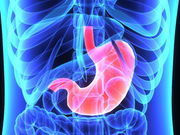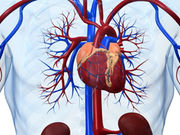Tag: Heart / Stroke-Related: Misc.
Gut Metabolite May Help Predict Cardiovascular Mortality Risk
Trimethylamine N-oxide may trigger plaque build-up in blood vessels
Diabetes May Impair Myocardial Proangiogenic Response
Reduction in amplitude of therapeutic neovascularization via rAAV.Tβ4 in pig model
Recs Provided for Transcatheter Aortic Valve Replacement
Point-of-care checklists address four areas from preprocedure assessment through follow-up
Fenofibrate May Reduce CVD in Patients With DM, Dyslipidemia
No reduction in primary outcome for 4,644 ACCORD participants followed for median of 9.7 years
Anterior T-Wave Inversion in 2.3 Percent of Healthy Young Adults
Seen in 2.3 percent of asymptomatic individuals; mainly occurs in leads V1 and V2
Arm Circumference May Be Useful Predictor of CVD Survival
Findings among elderly patients with cardiovascular disease
Alcohol Abuse Ups Risk of Several Heart Conditions
Alcohol abuse of similar magnitude to other well-recognized modifiable risk factors
December 2016 Briefing – Cardiology
Here are what the editors at HealthDay consider to be the most important developments in Cardiology for December 2016. This roundup includes the latest...
Low Dose Protocol Cuts Patient Exposure to Radiation During PCI
Significant reduction of kerma area product and air kerma at interventional reference point in LDP group
Female Gender Predictor of All-Cause Mortality After PCI
Female gender independently predicts mortality at 30 days and one year in two large data sets














